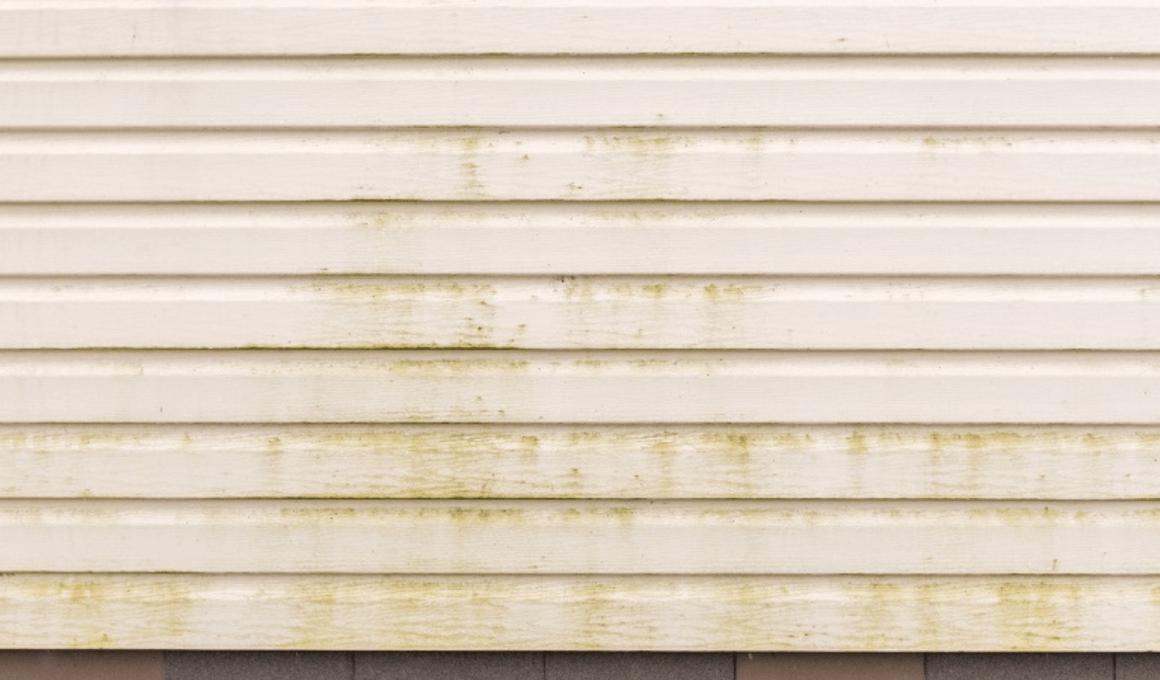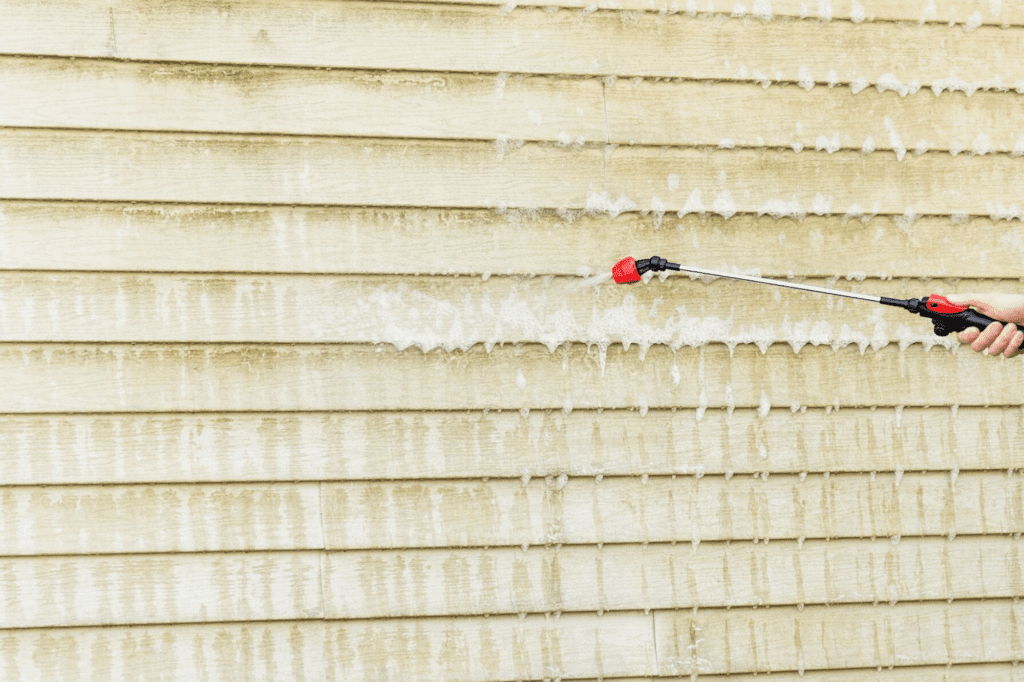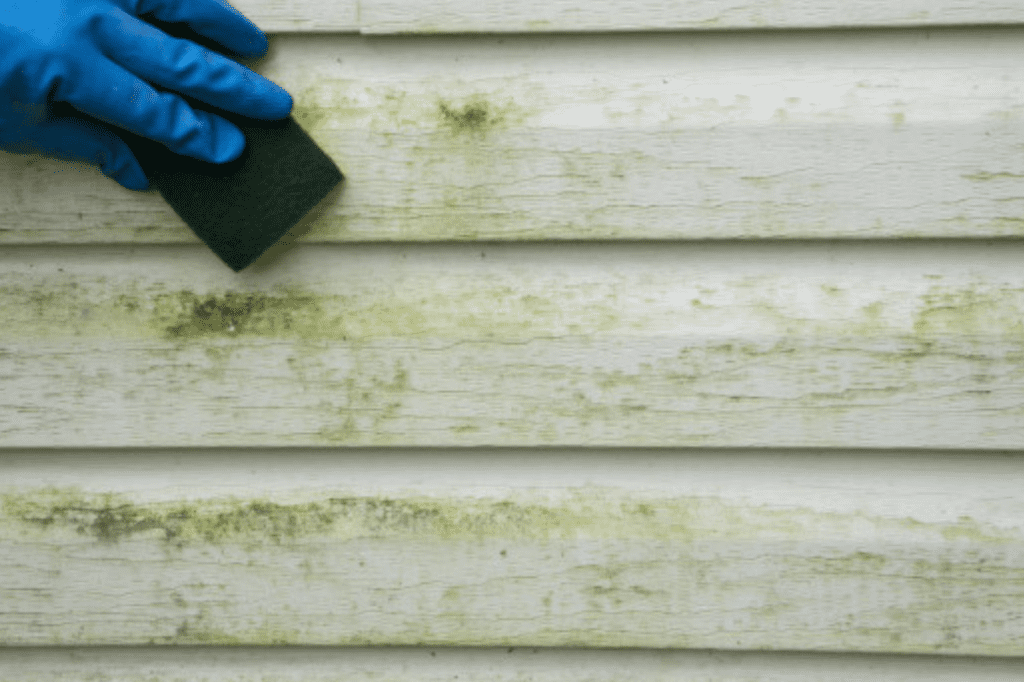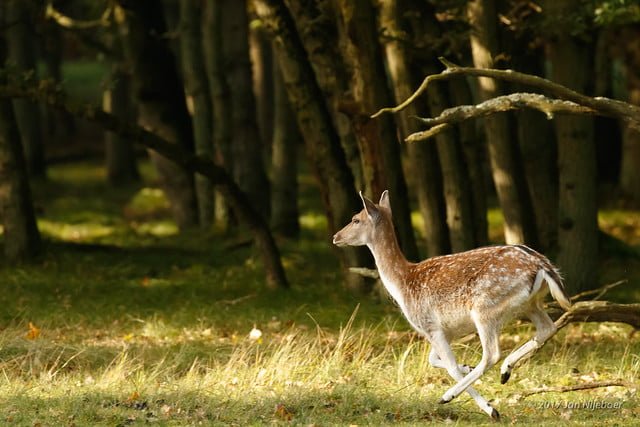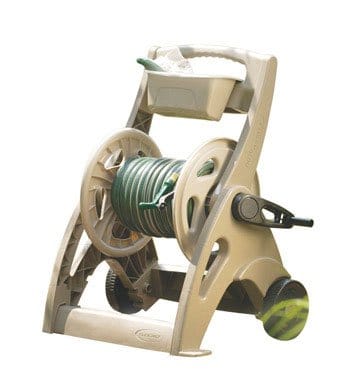Are you tired of dealing with unsightly mildew on your exterior painted wood? Don’t worry, we’ve got you covered! In this article, we will guide you through the step-by-step process of safely and effectively cleaning mildew from your painted wood surfaces.
By following these simple instructions, you can restore the beauty of your home while ensuring a safe environment for you and your loved ones.
First, you’ll learn how to identify the mildew problem and gather the necessary cleaning supplies. Then, we’ll walk you through preparing a cleaning solution and scrubbing the mildew-infested areas.
After that, it’s time to rinse the surface and dry the wood thoroughly. Finally, we’ll show you how to apply preventative measures to keep mildew at bay in the future.
With our easy-to-follow instructions, you can enjoy a clean and mold-free exterior, making your home the envy of the neighborhood.
So, let’s get started and say goodbye to mildew once and for all!
Quick Summary
- Identifying and addressing underlying causes of mildew growth is essential for effective cleaning and prevention.
- Using mildew-resistant paint or stain can help prevent future mildew growth on exterior painted wood.
- Wearing protective equipment, such as gloves and goggles, is important when dealing with mildew.
- Regularly inspecting wood surfaces for signs of mold or mildew growth and implementing preventive measures can maintain a clean and mold-free exterior.
Identify the Mildew Problem
You’ll need to closely inspect the exterior painted wood to identify the extent of the mildew problem and determine the best course of action for cleaning it. Identifying the causes of the mildew is crucial in preventing future growth.
Mildew thrives in damp environments, so check for areas where water may be seeping into the wood, such as cracks, gaps, or areas with poor drainage. Additionally, poor ventilation can contribute to mildew growth, so inspect areas with limited airflow, such as corners or spaces close to structures.
To prevent mildew from returning, address any underlying issues first. Fix any leaks or gaps in the wood to prevent moisture from seeping in. Consider improving the ventilation in the area by opening windows, installing fans, or trimming back vegetation that may be blocking airflow. Applying a mildew-resistant paint or stain to the wood surface can also help prevent future growth.
When inspecting the wood, be on the lookout for signs of mildew, such as black or green spots, a musty odor, or a fuzzy texture. If the mildew problem is extensive and has caused significant damage to the wood, it may be necessary to consult a professional for further evaluation and repair.
Remember to always prioritize your safety by wearing appropriate protective equipment, such as gloves and a mask, when dealing with mildew.
Gather the Necessary Cleaning Supplies
To effectively remove mildew from the outer surface of a painted wooden structure, it is imperative to gather all the essential cleaning materials. Cleaning tools and safety precautions are crucial when dealing with mildew. Here is a list of necessary supplies you will need to tackle the mildew problem safely and effectively:
| Cleaning Tools | Safety Precautions |
|---|---|
| Soft-bristle brush | Wear protective gloves and goggles to prevent skin and eye irritation |
| Mildew cleaner or bleach solution | Work in a well-ventilated area to avoid inhaling fumes |
| Bucket of warm water | Avoid mixing bleach with ammonia or any other cleaning agents |
| Pressure washer or garden hose | Make sure to read and follow all instructions on the cleaning products |
These tools and precautions are essential for ensuring your safety while effectively removing mildew from exterior painted wood. Remember to wear appropriate protective gear, work in a well-ventilated area, and follow all instructions on the cleaning products. By doing so, you can make sure that your cleaning process goes smoothly and safely.
Prepare a Cleaning Solution
To prepare a cleaning solution for removing mildew from exterior painted wood, you’ll first need to create a mixture of vinegar and water. This simple solution is effective at killing and preventing the growth of mildew. However, for stubborn stains, you can also add baking soda to the mixture, which’ll provide an extra boost of cleaning power. Remember to wear protective gloves and use a scrub brush to apply the solution to the affected areas.
Use Vinegar and Water Mixture
Mixing vinegar and water is an easy and effective way to tackle that stubborn mildew on your exterior painted wood, leaving you with a sense of satisfaction and relief. Not only is vinegar a natural and non-toxic cleaner, but it also has antimicrobial properties that can help kill the mildew spores. To create the cleaning solution, simply mix equal parts of vinegar and water in a spray bottle.
When using this mixture, it’s important to keep safety in mind. Make sure to wear protective gloves and goggles to avoid any contact with your skin or eyes. Additionally, ensure that the area you are cleaning is well-ventilated to prevent inhaling any fumes.
To give you a better understanding of the benefits of using vinegar and how it compares to alternative cleaning solutions, take a look at the table below:
| Vinegar | Alternative Cleaning Solutions |
|---|---|
| Natural | May contain harsh chemicals |
| Non-toxic | Potential health hazards |
| Antimicrobial | Less effective against mildew spores |
By using vinegar and water, you can safely and effectively remove mildew from your exterior painted wood, without exposing yourself to harmful chemicals.
Add Baking Soda for Stubborn Stains
For those tough stains that just won’t budge, try adding baking soda to your vinegar and water mixture for a powerful cleaning solution. Stubborn mildew stains on exterior painted wood can be quite a nuisance, but with this simple trick, you can tackle them effectively.
Baking soda is a natural cleaning alternative that can enhance the cleaning power of the vinegar and water mixture. It helps to break down the mildew and remove it from the surface of the wood.
To use this method, mix equal parts vinegar and water in a spray bottle and add a tablespoon of baking soda. Shake the bottle well to ensure the ingredients are thoroughly combined.
Spray the solution onto the mildew stains and let it sit for a few minutes. Then, scrub the area gently with a brush or sponge. Rinse the wood with clean water and pat dry.
This natural cleaning solution is safe and effective for removing stubborn mildew stains from exterior painted wood.
Scrub the Mildew-Infested Areas
To scrub the mildew-infested areas, use a soft bristle brush and apply gentle pressure. This will help to remove the mildew without damaging the painted wood surface. Make sure to scrub in a circular motion and cover all the affected areas thoroughly.
Use a Soft Bristle Brush
Gently scrub the mildew away with a soft bristle brush, allowing the natural beauty of your painted wood to shine through. When it comes to cleaning mildew from exterior painted wood, it’s important to use gentle cleaning techniques to avoid damaging the surface.
A soft bristle brush is ideal for this task as it effectively removes the mildew while being gentle on the paint. To ensure proper brush care, rinse the brush thoroughly after each use and allow it to dry completely before storing it. This will prevent the growth of mold and mildew on the brush itself.
By using a soft bristle brush and taking proper care of it, you can safely and effectively clean mildew from your exterior painted wood without causing any harm to the surface.
Apply Gentle Pressure
Now that you’ve gently brushed the mildew from the exterior painted wood, it’s time to apply gentle pressure. This will ensure a thorough cleaning and effectively remove any remaining traces of mildew. It will also prevent the mildew from spreading further. Remember, safety is paramount, so avoid using excessive force that could damage the wood. Instead, use gentle and controlled pressure to scrub away the mildew.
To further enhance your cleaning, consider using alternative cleaning solutions. These can be highly effective in eliminating mildew while being safe for both you and the environment. Here are five options to consider:
- Vinegar: It’s a natural acidic solution that makes it a powerful mildew remover.
- Hydrogen peroxide: It’s a versatile solution that not only kills mildew but also disinfects the wood surface.
- Baking soda: It’s a non-toxic option that effectively removes mildew and deodorizes the wood.
- Tea tree oil: It’s known for its antifungal properties and is a great natural alternative for mildew removal.
- Borax: This mineral-based cleaner is highly effective in eliminating mildew and preventing its future growth.
By incorporating these gentle pressure techniques and alternative cleaning solutions, you’ll successfully restore the beauty of your exterior painted wood while ensuring a safe and clean environment.
Rinse the Surface
First, grab a hose and unleash a powerful stream of water onto the mildew-covered surface. This will effectively rinse away any loose debris and prepare it for the next step. This step is crucial in the overall mildew removal process. By rinsing the surface with a strong stream of water, you’re not only removing any dirt or loose particles, but you’re also creating a clean slate for the subsequent steps.
When rinsing the surface, be sure to use a pressure washing technique. This involves applying gentle pressure to the hose nozzle, allowing the water to flow out with enough force to effectively remove the mildew. However, it’s important to note that excessive pressure can damage the wood, so be sure to find the right balance.
As you rinse, pay close attention to the areas where the mildew is most concentrated. Direct the stream of water towards those areas, ensuring that the mildew is thoroughly washed away. This targeted approach will help to ensure that all traces of mildew are removed from the exterior painted wood surface.
By following these mildew removal techniques and using the proper pressure washing technique, you can effectively rid your exterior painted wood of mildew and restore its beauty.
Dry the Wood
Ensure that the surface is completely free of moisture, allowing the wood to breathe and reveal its natural beauty. After rinsing the wood, it’s crucial to dry it thoroughly.
Here are some wood drying techniques to help you prevent future mildew growth and ensure the safety of your exterior painted wood:
- Use a clean, dry cloth or sponge to gently pat the wood dry. Avoid rubbing, as it can damage the paint.
- If possible, place the wood in a well-ventilated area with good airflow. This will speed up the drying process and prevent moisture from lingering.
- Consider using a fan or dehumidifier to aid in the drying process. These tools can help remove excess moisture from the air and prevent it from seeping back into the wood.
- If the weather permits, you can also leave the wood outside in the sun to dry. The sunlight’s natural warmth and UV rays can help kill any remaining mildew spores.
By following these wood drying techniques, you can ensure that your exterior painted wood is thoroughly dried, preventing future mildew growth. Remember, keeping the wood dry is essential for its longevity and maintaining its beautiful appearance.
Apply Preventative Measures
To keep your outdoor surfaces looking their best, it’s important to take proactive steps to prevent any potential issues. When dealing with mildew on exterior painted wood, applying preventative measures is key. By doing so, you can ensure long-term protection and maintain the integrity of your wood.
One of the most effective preventative methods is to keep the wood dry. Moisture is a breeding ground for mildew, so it’s crucial to minimize any water exposure. Make sure to fix any leaks or drips near the wood, and regularly inspect the area for any signs of water damage.
Additionally, you can consider installing gutters or downspouts to redirect rainwater away from the wood.
Another great way to prevent mildew is to apply a protective sealant or paint to the wood. This creates a barrier that inhibits the growth of mold and mildew. Choose a high-quality sealant or paint specifically designed for exterior use, and follow the manufacturer’s instructions for application. Remember to reapply the sealant or paint as needed to maintain its effectiveness.
By implementing these preventative measures, you can protect your exterior painted wood from mildew and ensure its longevity. Taking these steps will not only enhance the appearance of your outdoor surfaces but also provide a safe and healthy environment for you and your family.
Enjoy a Clean and Mold-Free Exterior
Keep your outdoor surfaces looking fresh and inviting by following these simple steps to maintain a beautiful, mold-free appearance.
When it comes to preventing mildew on exterior painted wood, taking proactive measures is key. Regularly inspect your wood surfaces for any signs of mold or mildew growth, especially in areas that are prone to moisture, such as near downspouts or under trees. Trim back any overhanging branches or foliage that may contribute to excess moisture. Additionally, make sure your gutters and downspouts are functioning properly to prevent water accumulation near your wood surfaces.
One effective and safe way to clean mildew from exterior painted wood is by using vinegar. Vinegar is a natural and non-toxic cleaning agent that can effectively kill mold and mildew. Simply mix equal parts of white vinegar and water in a spray bottle and generously spray the affected areas. Let the solution sit for about 15 minutes, then scrub the surface with a soft-bristle brush. Rinse thoroughly with water and allow the wood to dry completely before applying any protective finish.
By incorporating preventive measures for exterior wood maintenance and utilizing vinegar for cleaning, you can enjoy a clean and mold-free exterior. Not only will this enhance the overall appearance of your outdoor surfaces, but it will also help ensure the longevity and durability of your painted wood.
Frequently Asked Questions
How long does it take for the cleaning solution to effectively remove mildew from painted wood?
To effectively remove mildew from painted wood, the cleaning solution usually takes a few hours to work its magic. The best technique is to apply the solution, let it sit, scrub gently, and rinse thoroughly.
Can I use bleach as a cleaning solution for mildew removal on painted wood?
While bleach may be effective for mildew removal on painted wood, it’s important to consider alternative cleaning methods to minimize potential risks. Bleach can be harsh and may damage the wood or cause health issues if not used properly.
Is it necessary to wear protective gear while scrubbing the mildew-infested areas?
Yes, it is necessary to wear protective gear while scrubbing the mildew-infested areas. This ensures your safety and reduces the risk of inhaling harmful substances. It also doesn’t affect the effectiveness of the scrubbing process.
Are there any specific preventative measures that can be taken to avoid future mildew growth on exterior painted wood?
To prevent mildew growth on exterior painted wood, it’s important to keep the area well-ventilated, minimize moisture exposure, and inspect for any signs of mildew regularly. Use the best cleaning techniques to remove mildew promptly and avoid future growth.
What should I do if the mildew problem persists after following all the cleaning steps mentioned in the article?
If the mildew problem persists after following all the cleaning steps, you may want to consider using alternative cleaning methods such as vinegar or hydrogen peroxide. If that doesn’t work, it’s best to seek professional help for a safe and effective solution.
Conclusion
So now you know how to clean mildew from exterior painted wood! By following these steps, you can easily identify the problem, gather the supplies, and scrub away the mildew.
Remember to rinse and dry the wood thoroughly before applying any preventative measures. With a little bit of effort, you can enjoy a clean and mold-free exterior. Say goodbye to mildew and hello to a fresh-looking wood surface!





